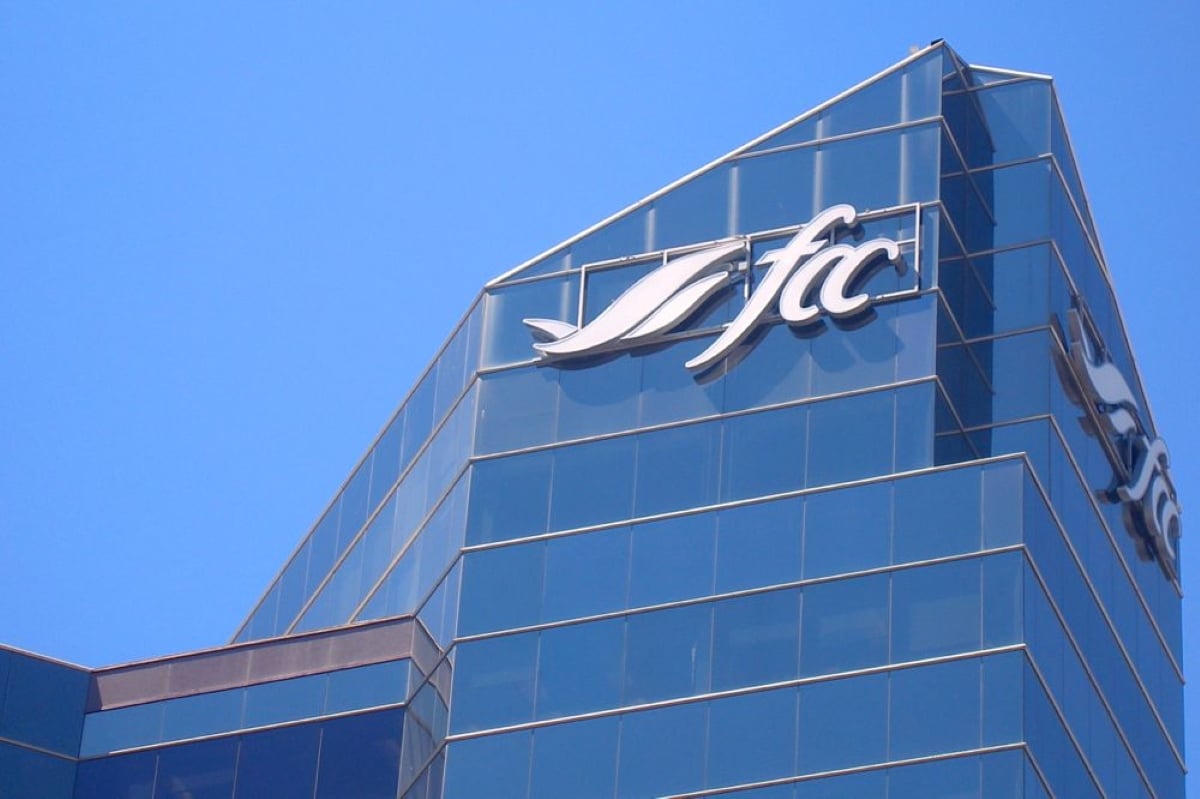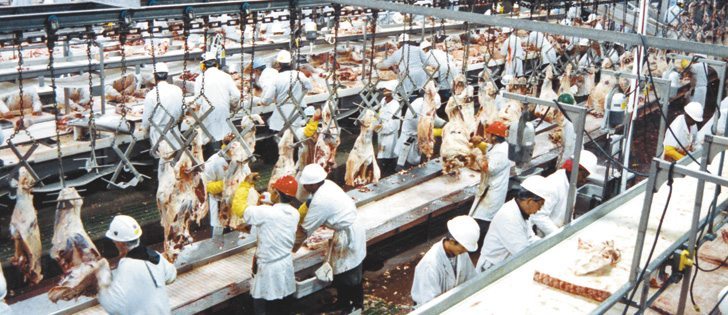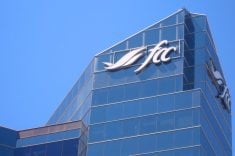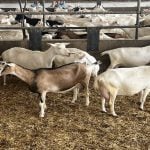Canada’s complaint about lack of access to the South Korean beef market will soon get its day in court – trade court.
The World Trade Organization announced Aug. 31 it is creating a dispute settlement panel to hear Canada’s arguments about why South Korea’s continuing ban of Canadian beef imports because of BSE violates WTO rules.
The Canadian government expects a panel ruling by May 2010, although even if it wins, it is unlikely South Korea would accept the judgment without an appeal.
Read Also

Lending policy still focused on primary producers: Farm Credit Canada
Farm Credit Canada said it has not changed its business practices and remains committed to supporting all producers, after a report from an Ottawa-based media outlet claimed otherwise.
“The international scientific community recognizes that Canadian beef is safe and I’m confident that the WTO dispute panel will rule in our favour,” agriculture minister Gerry Ritz said in a written statement issued to announce the WTO action.
Ritz earlier took his complaints to South Korean agriculture officials during a visit to Seoul, but failed to convince them to lift the ban, which has been in place since the 2003 BSE incident in Alberta.
He has suggested that once Canada decided to challenge the ban through the WTO, Korea might be willing to negotiate a settlement. So far, there has been no indication of a Korean interest in negotiating.
In the government announcement, trade minister Stockwell Day insisted Canada will win.
“South Korea’s continuing ban is not based on international standards or on science,” he said. “This is a clear violation of South Korea’s WTO obligations.”
Both ministers said creation of the panel at Canada’s request illustrates the Conservative government’s strong defence of the industry.
But at a summer meeting of the Canadian Cattlemen’s Association in Regina, an official of the Canada Beef Export Federation challenged that view.
Amos Kim, CBEF director in South Korea, said Canada should have launched a WTO challenge much earlier when it became clear Korea was not negotiating in good faith.
Canada believed that once beef from the United States won access, Canada would follow.
Kim said that was naïve.
This cattle market information is selected from the weekly report from Canfax, a division of the Canadian Cattlemen’s Association. More market information, analysis and statistics are available by becoming a Canfax subscriber by calling 403-275-5110 or at www.canfax.ca.
Fed cattle
Fed markets rose unexpectedly last week. Packers bought in anticipation of tighter market-ready supplies in September, Canfax said.
The Canfax weighted average price on steers rose $2.13 per hundredweight to $85.02 and heifers were up $2.02 to $84.42.
The cash-to-futures basis strengthened to $7.33 under from $9.42 under the previous week.
Tight fed supply in September should support prices, but exchange rates could change the outlook if the loonie rallies.
Also, the large supply of pork will offer strong competition at the meat aisle.
A large supply of available cows pressured prices lower last week.
D1, 2 cow average prices fell $1.71 to $39.94 and D3 cows averaged $34.61, down $2.16.
Butcher bull prices fell $2.14 to average $51.53.
Beef higher
U.S. Choice cutouts rose $1.84 US to close at $143.71 last week and Select rose $1.53 to $136.34, Canfax said.
The Calgary wholesale market for delivery this week rose $2 Cdn to $168 and the Montreal wholesale climbed $4 to $174.
Feeders stronger
Calves and heavy feeders mostly traded into a strong market with good interest last week, Canfax said.
The volume traded was up and steer prices rose 70 cents per cwt. but heifers were 37 cents lower.
Feed grain costs are falling in many areas and the cost of gain is expected to decrease.
That and the expectation of tight fed supplies this fall are encouraging feeders to buy cattle.
Stronger feeder prices will encourage producers to market cattle now instead of later.
With auction market volumes expected to grow, quality is goingto play a large part in price premiums.
A small offering of cow-calf pairs fetched an average price of $737.50, down almost $200 from the previous week.
Depending on quality and age, pairs are still being split, with cows headed to slaughter and calves to the feedlot.
Offerings on bred cows should pick up once calves are weaned.
Opinion
September 3, 2009
The Western Producer
www.producer.com
EVERYONE EATS, but that doesn’t make everyone an expert on food production. That is an essential point in one farmer’s essay that is attracting attention in food and agriculture circles.
Blake Hurst is a Missouri farmer. After hearing his agricultural methods criticized by an airplane seatmate who embraced the ideas of Michael Pollan, author of the 1996 book, The Omnivore’s Dilemma, he struck back.
He posted The Omnivore’s Delusion: Against the Agri-Intellectuals, on The American, a website of the Journal of the American Enterprise Institute.
Much in Hurst’s essay will resonate with other farmers, at least some of whom wonder how food production and making a living from farming and ranching now seems subject to so many critical opinions from people he calls “agri-intellectuals.”
For example, Hurst wonders in his essay why so many people think farmers should ignore technological, productive and yes, profit-oriented agricultural gains, and instead embrace methods from the past.
“He was a businessman,” writes Hurst about the person who sparked his essay, “and I’m sure spends his days with spreadsheets, projections and marketing studies. He hasn’t used a slide rule in his career and wouldn’t make projections with tea leaves or soothsayers. …
“But he expects me to farm like my grandfather, and not incidentally, I suppose, to live like him as well.”
Hurst discusses the fact that many so-called industrial farms are also family farms and that herbicides, fertilizers and biotechnology have improved productivity and lowered the cost of food.
He says farmers need not apologize for using commercial fertilizer. The fact that it is easier and cheaper than broadscale use of manure or compost is perfectly defensible.
Nor does he shrink from agricultural animal treatment, an oft-criticized element of food animal production. He explains some of the reasons behind such things as farrowing crates and turkey housing.
Hurst is to be congratulated for countering some of the criticisms often lobbed at modern farming. Few producers take that opportunity.
His essay represents one more chapter in the book of struggle between industrial and agrarian approaches to growing food.
One method is typically compared to another, be it faster versus slower, larger versus smaller, commercial versus organic, sustainable versus industrial, factory versus pastoral – even though there’s no universal understanding of what these terms mean.
The fact remains that our current system is incredibly efficient and largely responsible for the quality and quantity of food available to consumers.
Modern agriculture has a lot of benefits – and a lot of problems – because no methods are without consequence. It is natural and logical for people to criticize what they see before them and to seek improvements.
Hurst’s essay is an admirable ripost to volleys from agri-intellectuals but it isn’t the last word. It shouldn’t be. But through such exchanges, greater awareness and improvements are born.
To read Hurst’s essay, go to the opinion section of www.producer.com and follow the links.














